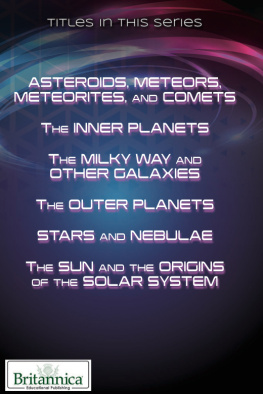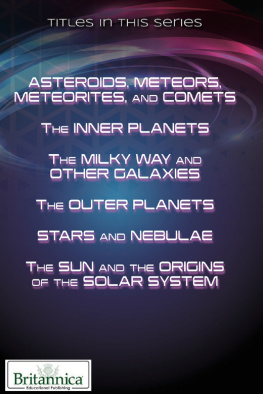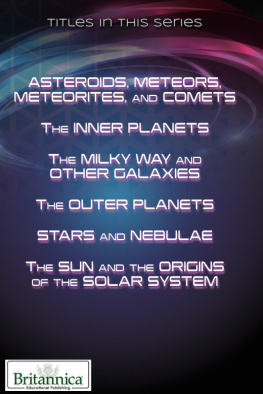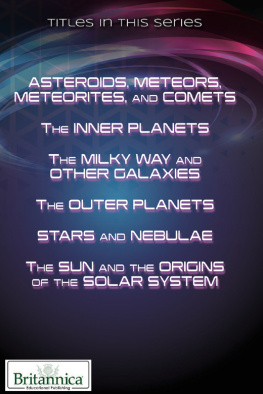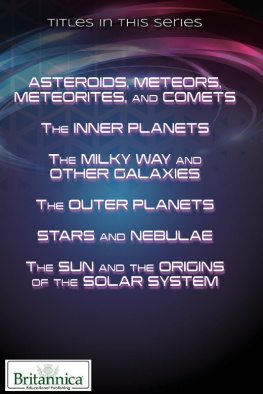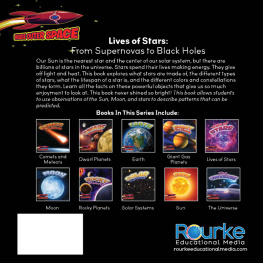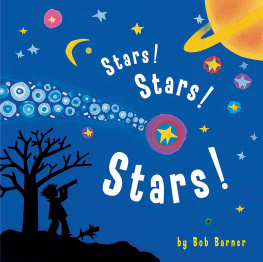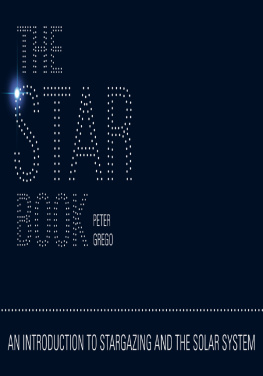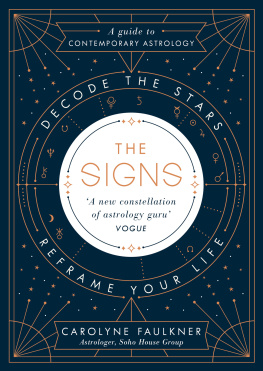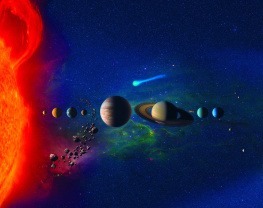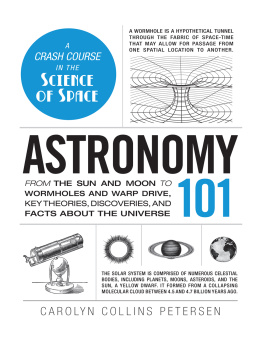Published in 2019 by Britannica Educational Publishing (a trademark of Encyclopdia Britannica, Inc.) in association with The Rosen Publishing Group, Inc.
29 East 21st Street, New York, NY 10010
Copyright 2019 by Encyclopdia Britannica, Inc. Britannica, Encyclopdia Britannica, and the Thistle logo are registered trademarks of Encyclopdia Britannica, Inc. All rights reserved.
Rosen Publishing materials copyright 2019 The Rosen Publishing Group, Inc. All rights reserved.
Distributed exclusively by Rosen Publishing.
To see additional Britannica Educational Publishing titles, go to rosenpublishing.com.
Britannica Educational Publishing
J.E. Luebering: Executive Director, Core Editorial
Andrea R. Field: Managing Editor, Comptons by Britannica
Rosen Publishing
Nicholas Faulkner: Editor
Brian Garvey: Series Designer / Book Layout
Cindy Reiman: Photography Manager
Sherri Jackson: Photo Researcher
Library of Congress Cataloging-in-Publication Data
Names: Faulkner, Nicholas, editor. | Gregersen, Erik, editor.
Title: Stars and nebulae / edited by Nicholas Faulkner and Erik Gregersen.
Description: New York : Britannica Educational Publishing, in association with Rosen Educational Services, 2019 | Series: The universe and our place in it | Audience: Grades 712 | Includes bibliographical references and index.
Identifiers: LCCN 2018007396| ISBN 9781508106036 (ebook)
Subjects: LCSH: StarsJuvenile literature. | NebulaeJuvenile literature.
Classification: LCC QB801.7 .S7245 2018 | DDC 523.8dc23LC record available at https://lccn.loc.gov/2018007396
Manufactured in the United States of America
Photo credits: Cover (top), p. 1 Carlos Fernandez/Moment/Getty Images; cover (bottom) Outer Space/Shutterstock.com; back cover iStockphoto.com/lvcandy; pp. 67 Hubble SM4 ERO TeamESA/NASA; pp. 1011 The Hubble Heritage Team (AURA/STScI/NASA); p. 13 Kean Collection/Getty Images; pp. 17, 25, 29, 33, 47, 49, 65 Encyclopdia Britannica, Inc.; pp. 20, 44 ESA/Hubble/NASA; pp. 31, 98, 100 NASA; pp. 35, 46, 52 Two Micron All Sky Survey (2MASS), a joint project of the University of Massachusetts and the Infrared Processing and Analysis Center/California Institute of Technology, funded by NASA and the National Science Foundation; pp. 3839 NASA, ESA, H. Bond (STScI), and M. Barstow (University of Leicester); pp. 5657 Stocktrek Images/Getty Images; p. 68 A. Nota-ESA/NASA; p. 79 Merriam-Webster Inc.; p. 81 Smithsonian Institution/Science Source; p. 84 NASA/CXC/PSU/G.Pavlov et al.; p. 91 NASA/Science Source; p. 94 NASA, ESA, HEIC, and The Hubble Heritage Team (STScI/AURA); p. 102 Stock Montage/Archive Photos/Getty Images; p. 103 Print Collector/Hulton Archive/Getty Images; p. 105 Paul Fearn/Alamy Stock Photo; interior pages background (blue triangles) DiamondGraphics/Shutterstock.com.
CONTENTS
M any ancient cultures believed that the stars were lights attached to a huge dome (the sky) over Earth. The stars maintained fixed positions relative to each other as they moved across the heavens, as if the sky dome were rotating around Earth.

Approximately 100,000 stars at the core of the globular Omega Centauri cluster, as captured by NASAs Hubble Space Telescope.
Ancient people imagined patterns in the stars and grouped them into constellations representing various animals, people, mythological heroes, and even everyday objects. Some cultures attributed godlike powers to the stars and worshipped them. Many also thought that the motions of the heavenly bodies corresponded to or foretold events on Earth. This belief, shared by many cultures, became the basis of astrology.
More practically, the motions of the stars (and planets) during the year became the basis for calendars, which were crucial in the development of agriculture. Also, the stars became valuable tools for navigation, especially for seafaring peoples such as the Phoenicians and Pacific Islanders.
In the last century, scientists determined what stars areenormous balls of incandescent gas, powered by nuclear fusion reactions in their cores. However, to just say that stars are balls of gas that shine through the workings of their internal energy does not do justice to their full nature and complexity. Not all stars are like our Sun. Some stars are massive giants doomed to burn away in merely millions of years. Others will have violent and dramatic fates as supernovae, white dwarfs, neutron stars, or even black holes.
When a star goes supernova, considerable amounts of its matter, equaling the material of several Suns, may be blasted into space with such a burst of energy as to enable the exploding star to outshine its entire home galaxy. Supernovae are characterized by a tremendous, rapid brightening lasting for a few weeks, followed by a slow dimming. A supernova explosion is a cataclysmic event for a star, one that essentially ends its active (i.e., energy-generating) lifetime. Supernovae release many of the heavier elements that make up the components of the solar system, including Earth, into the interstellar medium.
White dwarfs have a mass similar to that of the Sun, but with a radius comparable to that of Earth, making them extremely dense. White dwarfs have average densities approaching 1,000,000 times that of water.
Neutron stars are any of a class of extremely dense, compact stars thought to be composed primarily of neutrons. Their masses range between 1 and 2 times that of the Sun. Having so much mass packed within a ball on the order of 20 km (12 miles) in diameter, a neutron star has a density that can reach that of nuclear values, which is roughly 100 trillion (1014) times the average density of solar matter or of water. This approximates the density inside the atomic nucleus, and in some ways a neutron star can be conceived of as a gigantic nucleus.
A black hole can be formed by the death of a massive star. When such a star has exhausted the internal thermonuclear fuels in its core at the end of its life, the core becomes unstable and gravitationally collapses inward upon itself, and the stars outer layers are blown away. The crushing weight of constituent matter falling in from all sides compresses the dying star to a point of zero volume and infinite density called the singularity, around which nothing, not even light, can escape.
Nebulae are clouds of gas and dust that occur in the space between the stars. A nebula is thus made up of the interstellar medium. Some nebulae give birth to new stars, and dying stars expel nebulae. The Sun was formed roughly 4.5 billion years ago inside a nebula that was produced from a supernova.
For thousands of years, people have gazed at the seemingly infinite number of stars in the night sky. For most of this time, they could only guess about the nature of these pinpoints of light, often making them objects of wonder, worship, comfort, or fear.
I n the observable universe, its estimated that there are roughly as many stars as there are grains of sand on all of the beaches on Earth. There are all different types of stars of all different sizes and ages. Throughout the Milky Way Galaxy (and even near the Sun itself), astronomers have discovered stars that are well evolved or even approaching extinction, or both, as well as occasional stars that must be very young or still in the process of formation. Evolutionary effects on these stars are not negligible, even for a middle-aged star such as the Sun. More massive stars must display more spectacular effects because the rate of conversion of mass into energy is higher. While the Sun produces energy at the rate of about two ergs per gram per second, a more luminous main-sequence star can release energy at a rate some 1,000 times greater. Consequently, effects that require billions of years to be easily recognized in the Sun might occur within a few million years in highly luminous and massive stars. A supergiant star such as Antares, a bright main-sequence star such as Rigel, or even a more modest star such as Sirius cannot have endured as long as the Sun has endured. These stars must have been formed relatively recently.

